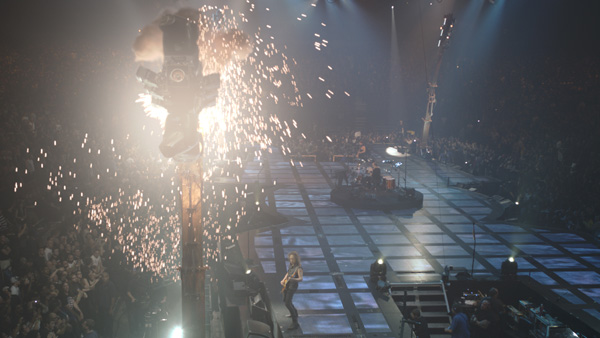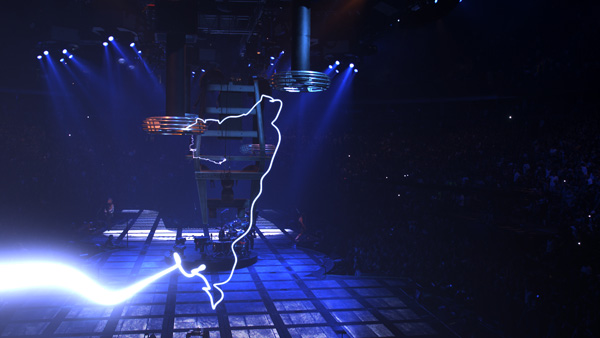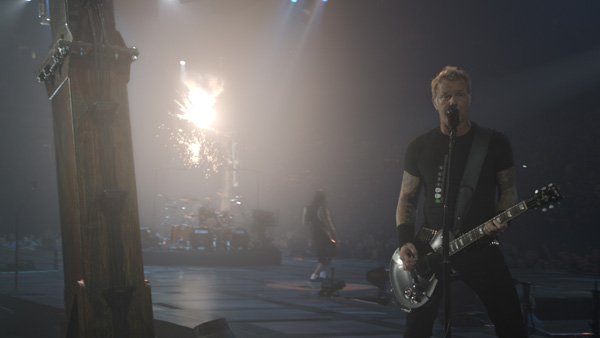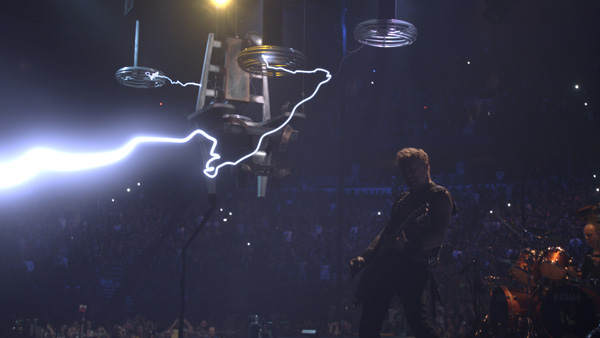
‘Metallica: Through the Never’ in 3D combines fantasy with a full Metallica concert. Opus VFX seized a chance to contribute particle and electrical effects.
METALLICA - Heavier Metal |
|
‘Metallica: Through the Never’ combines a fantasy story with a hard rocking Metallica concert for their dedicated fans, starring the band’s members in full performance mode. Beyond a traditional concert film, the movie includes a story about a young roadie sent to find an elusive item the band needs for their show, but he soon finds himself surrounded by dangerous circumstances - and facing an encounter with the Death Dealer. |
 |
On-stage PerformancesThe visual effects for the film, which was shot in stereo 3D, include a series of shots created by Opus VFX, a studio located in Winnipeg, Canada. Brought in near the end of the project, Opus aligned their work to the band’s showy onstage performances and pushed them further, using various effects and lighting techniques to match the complex concert lighting with spots, lasers and smoke, in stereo 3D. By the time the production VFX supervisor Boyd Shermis contacted the team at Opus VFX, time and money were very limited. He had worked with the company before and knew their capabilities. Opus VFX Supervisor Mike Shand said, “We were brought in at a late stage to take care of a collection of about 20 shots that had been sidelined, but I think Boyd chose us because he knew we were capable of delivery. We weren’t involved from an early stage but were front and centre during the final push. The work we did enhanced the stage presentation beyond what was feasible on-stage – exploding transformers, electrical arcs and similar effects. It was a great project to be a part of.” |
 |
|
Sparks and Tesla CoilsThe concert was meant to end by ‘falling apart’, shown in particular by malfunctioning electrical equipment as it broke down, but the 3D shoot of the concert lacked the imagery to make the sequences play out properly. The team created a number of particle simulations to generate sparks, and enhanced or extended the Tesla coil effects. In particular, interactive lighting was needed in the composite to provide enough realism and to work with the lasers, flashing lights and fog happening on the set. The VFX files also had to be delivered in stereo. |
 |
|
Metallica’s trademark props and effects were also a part of their enhancement work, especially when they involved potentially dangerous showers of sparks, exploding fuseboxes, and the Tesla coils. The band had organised a series of practical coils to go off during the concert shoot. These worked quite well but did not look impressive or dangerous enough in the plates to suit the director Nimród Antal and generate enough excitement. To create the dramatic blue arcs, sometimes reaching out toward the audience, the crew and the camera, Opus FX used one of their own custom plug-ins. |
 |
|
Interactive LightingThe interactive lighting, in many ways their biggest challenge on the project, relied on on-set data. As they had not had a chance to visit the set, Boyd supplied precise lens and camera data and interocular distances for each shot to produce accurate tracks, plus enough measurements to re-create the sets in 3D. |
 |
|
Their CG modelling and animation pipeline is based on 3ds Max with Fusion for compositing, plus Maya and Nuke as alternatives. For some of the particle simulations and smoke they were also using Fume FX. Their shots took about six weeks to complete. The artists at Opus VFX have worked together for about ten years, and gained quite a bit of experience in simulations, especially particles. Also, prior to starting Opus, Mike Shand had been VFX supervisor at Frantic Films, now Prime Focus. At Frantic, he had not only been developing particle and other simulations but also working on pipelines for stereoscopic feature films including ‘Journey to the Centre of the Earth’, now considered a benchmark film for stereo production. Opus has been further developing and refining the pipeline created for this film ever since then. www.opusvfx.com |


















